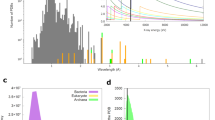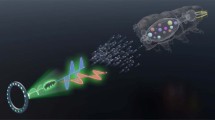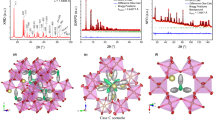Abstract
THE crystal structure of acetanilide has been determined1 by classical X-ray diffraction methods, making use of information derived from polarized infra-red radiation technique as a time-saver in the trial-and-error process. The crystals from water or ethanol vary in form from plates {100} to truncated bipyramids {111}, but growth from the molten state results in acicular crystals, elongated along [b] and tabular on (100). The orthorhombic unit cell contains eight molecules and has dimensions: [a] = 19.50, [b] = 9.46 and [c] = 7.96 A.; space group Pbca — D2h15.
Similar content being viewed by others
Article PDF
References
Report of Institute of Physics X-Ray Analysis Conference, 1947, J. Sci. Instr., 25, 90 (1948).
Winchell, A. N., "Optical Properties of Organic Compounds" (Wisconsin, 1943).
Crooks, D. A., Nature, 160, 17 (1947).
Author information
Authors and Affiliations
Rights and permissions
About this article
Cite this article
BROWN, C., CORBRIDGE, D. Crystal Structure of Acetanilide: Use of Polarized Infra-Red Radiation. Nature 162, 72 (1948). https://doi.org/10.1038/162072a0
Issue Date:
DOI: https://doi.org/10.1038/162072a0
Comments
By submitting a comment you agree to abide by our Terms and Community Guidelines. If you find something abusive or that does not comply with our terms or guidelines please flag it as inappropriate.



